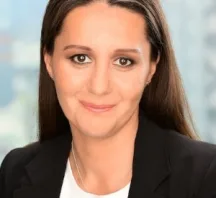Keep an eye on portfolio turnover in ETPs



With new product launches and Australia's exchange-traded product (ETPs) continued market expansion in the second quarter, investors should be reminded that ETP portfolio turnover is an important issue, according to Morningstar.
The report noted that keeping a lid on portfolio turnover helped reduce trading costs within the vehicle and increase the use of the capital gains tax discount.
However, not "all turnover was bad". According to Morningstar's report, skilled active managers were able to generate additional performance for investors by making shrewd portfolio shifts that outweighed the costs associated with portfolio turnover.
Also, strategic beta ETPs could offer additional returns which would compensate investors for higher turnover but it was hard to say whether the typical active manager or strategic beta provider could consistently deliver enough compensating value-add to offset the additional costs associated with higher turnover.
One of the principal drivers of turnover in passive exchange-traded funds (ETF) were changes in index constituents, such as stock additions or removals or merger and acquisition activity.
The report also stressed that most passive ETPs were likely to have relatively low portfolio turnover while actively-managed products or strategic beta ETFs were likely to display significantly higher turnover.
Morningstar Australasia associate director, Alex Prineas, said: "While most passive vehicles have remarkably low portfolio turnover, this is not the case for some actively-managed products and strategic beta funds."
"Before taking a plunge, investors and advisers should strive to understand an exchange-traded vehicle's investment strategy and other fundamental characteristics, including turnover, and determine what role the product will play in an overall portfolio."
During the second quarter of the year there were around 10 new product launches, after none in the first three months of the year, while total ETP assets grew from $21.13 billion at the end of March to $22.35 billion at the end of June, which represented a growth of 5.78 per cent.
Recommended for you
Higher interest rates could be on the cards for 2026 after monthly CPI inflation for October showed an increase of 3.8 per cent.
Global actively managed ETF assets hit a record high in October, according to independent research and consultancy firm ETFGI, breaking the record set the previous month.
Federation Asset Management has appointed an investment director and head of responsible investments to support ESG integration strategy across the firm.
Global X has announced the launch of its latest ETF, providing access to Japan’s largest companies under a low-cost structure.












